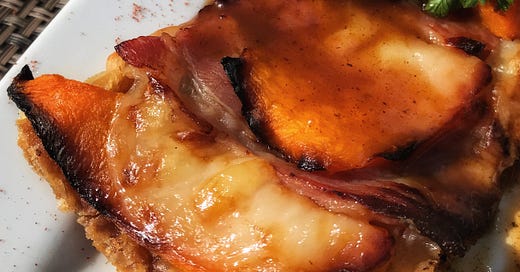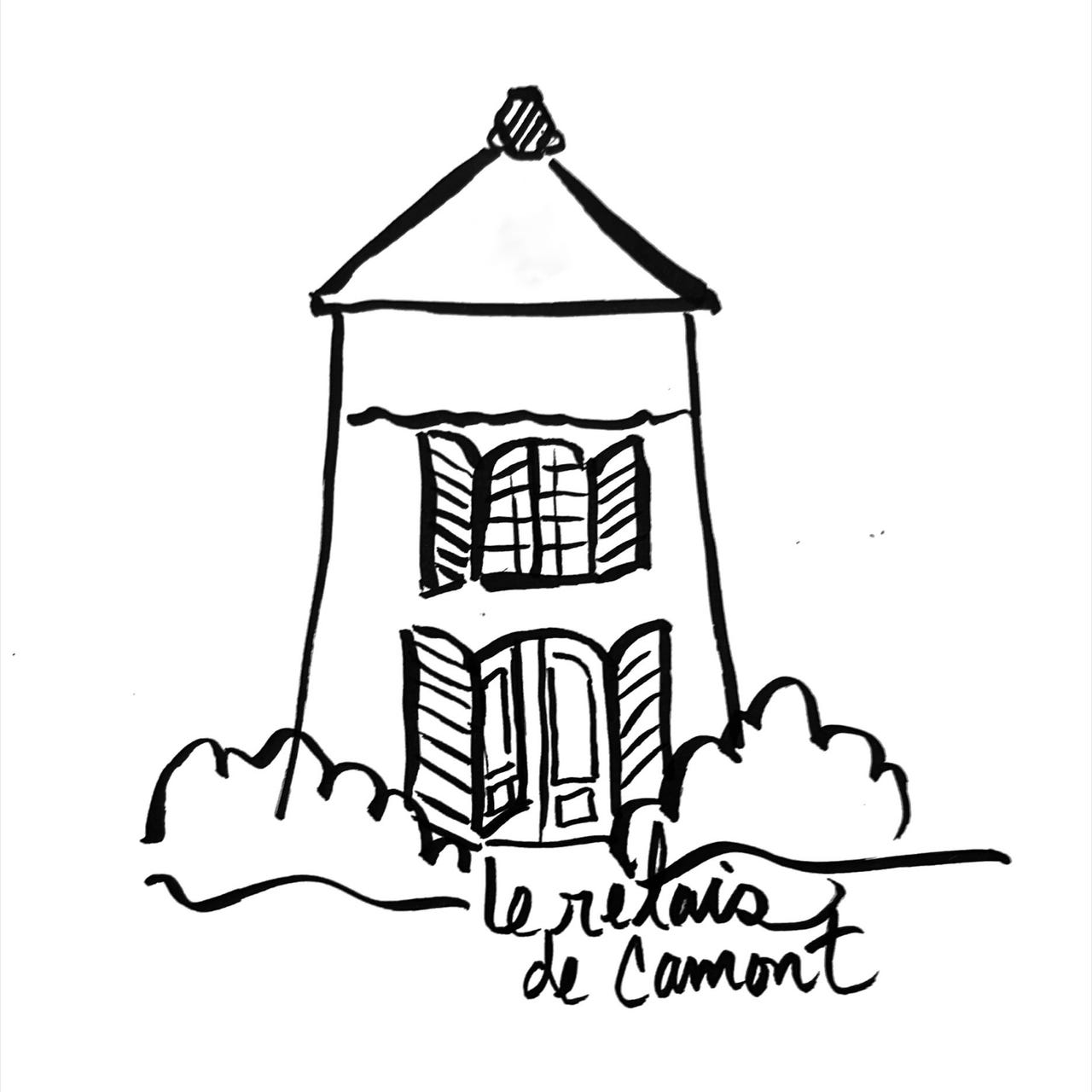Looking at squash and pumpkins in Autumn.
Today at lunch, I had a lovely entrée or starter—La Tarte Fine de Potiron, Brebis et Lard—a warm piece of fragile pastry crust layered with the thinnest of slices of pumpkin, sheep’s cheese, and lean bacon drizzled with a light caramelized vinaigrette; and served with a handful of peppery young roquette dressed simply with some hazelnut oil. It was perfect.
This entry into what would be an exemplary bistro lunch in Nérac was what I love most about French food- straightforward, texturally delicate, complex flavors that seemingly marry effortlessly and just enough on the plate to leave me wanting more. Although I thought the sauce/dressing was superfluous at first, I found myself stealing a bit of baguette from the basket and mopping up the plate—as one does here at home. Long after I finished my very good and very rare entrecôte, I kept thinking back to that tarte fine. What made it so good?
First, let’s talk flavor. In France, the very seasonal appearance of pumpkin (Cucurbitaceae Cucurbita Maxima) is a garden herald of a return to fragrant soup weather. There is nary a sweet pie, a whipped creamed caffe latte, or candy-filled porch decoration in sight. Instead, a savory Velouté de Courge, a cheese-crusted Gratin de Citrouille, or even a simple garlicky Potiron au Four will find their way onto the French kitchen table. The French approach to pumpkin is nearly always savory. So what better to pair with the rich, dense, deep orange squash than a salty Basque cheese and slices of lean bacon (think Canadian bacon from the loin)? The squash/pumpkin is more vegetable rather than fruit here.
Next, texture. While the heavy flesh of the pumpkin family is often thick cut, cubed or pureed into a paste, these delicate thin slices, like orange crescent wafers, were layered like shiplap with the cheese and meat alternating over the equally thin and buttery pastry. A drizzle of a secret sauce was dusted with piment d’Espelette to finish. Each bite included some of each of the distinct flavors in a delicate mouthful.; not crispy but melting.
So is that a recipe? Close enough for me to give it a try this week; check my Instagram feed later this week. Let’s recap.
Use a thin layer of rustic rough puff pastry for the base. (more on that later)
Layer with alternating very thin slices of butternut or other dense squash, hard sheep‘s cheese, and lean salted bacon.
Bake in a very hot oven (220’C /425’F) for 15-20 minutes until the pastry is deep brown and the cheese is melted.
Drizzle with a mild vinaigrette and dust with piment d’Espelette. Serve with a few fresh winter leaves on the side dressed just with hazelnut or walnut oil.
Read Finding France: A Culinary Memoir, an edible tale of a young traveling cook who gets stuck on a barge in France and stays to become a wise old woman with a head full of ideas on French food and cooking. Kate Hill—cook, teacher, mentor, and author—invites you into her world of French food as learned over three dozen years of practice in the rural farmlands of Gascony. Published as a serialized memoir here on Substack-
Kate Hill is the author of over a dozen cookbooks, including A Culinary Journey in Gascony, Cassoulet: A French Obsession, and A Gascon Year Series of 12 recipe and story volumes (available here). Published in America’s Best Food Writing 2019, curated by Samin Nosrat, she has written for Saveur Magazine and The Los Angeles Times. Kate and her cooking, butchery, and charcuterie programs have been featured in Bon Appétit, Food and Wine, Condé Nast Traveler, The Washington Post, The New York Times, Boston Globe, Faire magazine, My French Country Home, and countless websites.






Thank you, again, Kate! This sounds wonderful, and your descriptions transport me to France. Because of the COVID surge, our “wings were clipped” yet again, so it will be late spring before we’ll see La Belle France again. Merci beaucoup 🇫🇷
I think this is something I can accomplish while I'm here! We had potimarron soup for dinner tonight 😊